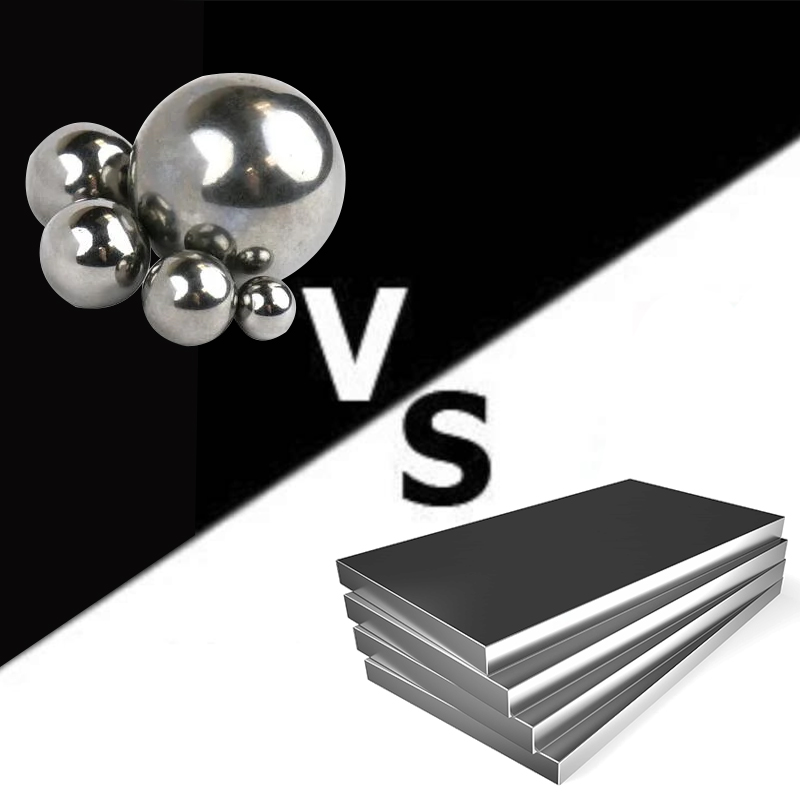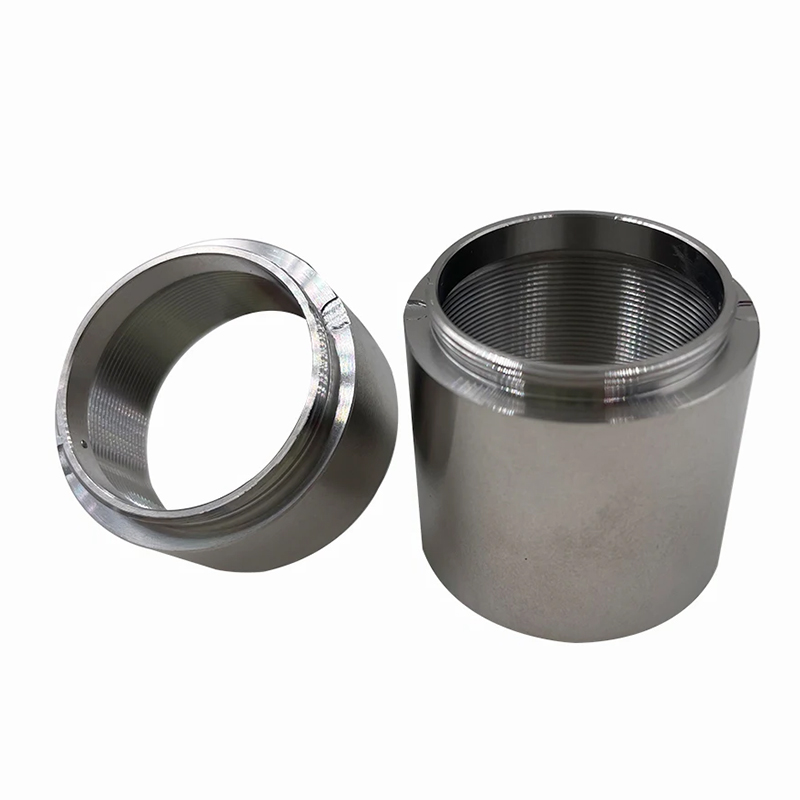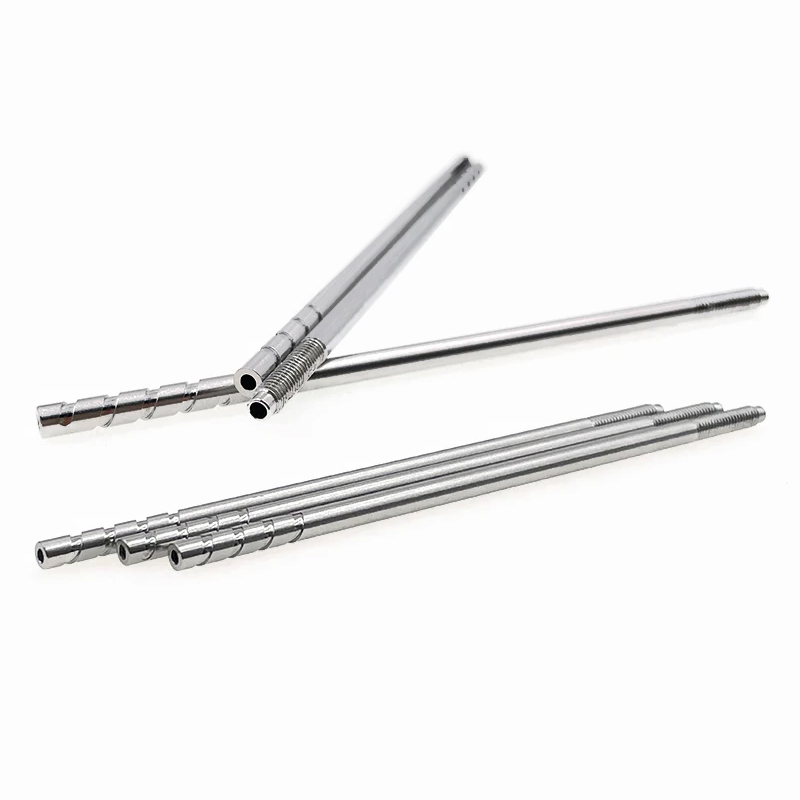1018 Stainless Steel vs 304: What's the Difference?
 Jun 22,2024
Jun 22,2024

When choosing the right type of stainless steel for a project, understanding the differences between various grades is essential. Two commonly used grades are 1018 and 304 stainless steel. Each has its unique properties and applications. Knowing these can help you make an informed decision. This article will explore the differences in composition, corrosion resistance, and strength. It will also cover ductility, machinability, weldability, and magnetic properties. Additionally, it will discuss applications, cost, and appearance of 1018 and 304 stainless steel.
Composition
Understanding the composition of different grades of stainless steel is essential for selecting the right material for your project.

1018 Stainless Steel Composition
1018 stainless steel is primarily a low-carbon steel, composed mainly of iron with a carbon content ranging from 0.15% to 0.20%. It also contains manganese (0.60% - 0.90%) and phosphorus (0.04% maximum). The low carbon content makes it a mild steel, which is more ductile but less hard compared to higher carbon steels.
|
Element |
Composition (%) |
|
Carbon (C) |
0.15% - 0.20% |
|
Manganese (Mn) |
0.60% - 0.90% |
|
Phosphorus (P) |
0.04% maximum |
|
Sulfur (S) |
0.05% maximum |
|
Iron (Fe) |
Balance |
304 Stainless Steel Composition
304 stainless steel is an austenitic stainless steel from the 300 series. It contains 18-20% chromium and 8-10.5% nickel, along with small amounts of carbon (up to 0.08%), manganese (up to 2%), and silicon (up to 1%). It also has trace amounts of phosphorus, sulfur, and nitrogen. The high chromium and nickel content give 304 excellent corrosion resistance and mechanical properties.
|
Element |
Composition (%) |
|
Carbon (C) |
0.08% maximum |
|
Chromium (Cr) |
18% - 20% |
|
Nickel (Ni) |
8% - 10.5% |
|
Manganese (Mn) |
2% maximum |
|
Silicon (Si) |
1% maximum |
|
Phosphorus (P) |
0.045% maximum |
|
Sulfur (S) |
0.03% maximum |
|
Nitrogen (N) |
0.10% maximum |
|
Iron (Fe) |
Balance |
Corrosion Resistance: 304 vs 1018 Stainless Steel
One of the most significant differences between 1018 and 304 stainless steel is their corrosion resistance.

1018 Stainless SteelCorrosion Resistance
1018 is a low-carbon steel and does not contain significant amounts of chromium or nickel, making it more susceptible to rust and corrosion when exposed to moisture and corrosive environments. This limits its use in applications where corrosion resistance is critical.
304 Stainless SteelCorrosion Resistance
304 stainless steel offers superior corrosion resistance due to its high chromium and nickel content. Chromium forms a passive oxide layer on the surface. This layer protects it from rust and corrosion. This makes 304 ideal for use in environments exposed to moisture, chemicals, and other corrosive elements. It is especially suitable for marine and industrial applications.
Strength: 304 vs 1018 Stainless Steel
Both 1018 and 304 stainless steel have distinct strength characteristics. These make them suitable for different applications. 1018 stainless steel offers good machinability and moderate strength. This makes it ideal for applications where high strength is not critical.
1018 Stainless Steel Strength
1018 stainless steel has a tensile strength of around 440 MPa (64,000 psi) and a yield strength of approximately 370 MPa (53,700 psi). While these values make it suitable for many structural applications, it does not match the strength of 304 stainless steel.
304 Stainless Steel Strength
304 stainless steel has higher tensile and yield strengths, typically around 505 MPa (73,200 psi) and 215 MPa (31,200 psi), respectively. Its greater strength and hardness make it a preferred choice for applications requiring durability and resistance to mechanical stress.
Ductility: 304 vs 1018 Stainless Steel
1018 stainless steel has higher ductility, making it easier to form and machine, while 304 is less ductile but more durable.
1018 Stainless Steel Ductility
Due to its lower carbon content, 1018 stainless steel is highly ductile, meaning it can be easily stretched or formed without breaking. This property is beneficial for applications requiring complex shapes and fine detailing.
304 Stainless Steel Ductility
304 stainless steel is also ductile but less so than 1018. Its higher strength can limit its ability to be formed into intricate shapes without specialized equipment. However, it remains ductile enough for many industrial applications.
Machinability
1018 stainless steel is easier to machine due to its lower hardness, while 304 requires advanced tools and techniques for effective machining.
1018 Stainless Steel Machinability
1018 stainless steel is known for its good machinability. Its low carbon content allows for easier cutting, drilling, and machining, making it a popular choice for manufacturing precision parts.
304 Stainless Steel Machinability
Machining 304 stainless steel is more challenging due to its higher hardness and toughness. It requires more advanced tools and techniques, such as slower cutting speeds and specialized cutting fluids. Despite these challenges, 304's machinability can be managed with the right equipment.
Weldability
1018 stainless steel offers excellent weldability with low cracking risk. 304 stainless steel also welds well. However, it requires careful handling to prevent corrosion issues.
1018 Stainless Steel Weldability
1018 stainless steel has excellent weldability. Its low carbon content reduces the risk of weld cracking, making it suitable for various welding methods, including MIG, TIG, and stick welding.
304 Stainless Steel Weldability
304 stainless steel also has good weldability, but its higher carbon content can increase the risk of sensitization, leading to intergranular corrosion in the weld area. Using low-carbon variants like 304L or post-weld heat treatment can mitigate these issues.
Magnetic Properties
1018 stainless steel is magnetic. 304 stainless steel is non-magnetic in its annealed state. However, it can become slightly magnetic when cold worked.

1018 Stainless Steel Magnetic Properties
1018 stainless steel is generally considered magnetic because it is a low-carbon steel with a predominantly ferritic structure. This makes it suitable for applications requiring magnetic properties.
304 Stainless Steel Magnetic Properties
304 stainless steel is non-magnetic in its annealed state due to its austenitic structure. However, it can become slightly magnetic when cold worked or welded. For applications requiring non-magnetic properties, 304 is a better choice.
Applications
1018 is used in automotive parts and machinery. 304 is preferred for food processing, medical devices, chemical equipment, and architectural applications due to its corrosion resistance.
1018 Stainless Steel Applications
1018 stainless steel is used in various applications where its machinability, ductility, and weldability are advantageous:
Automotive Parts
Shafts, gears, and fasteners
Construction
Structural components like beams and columns
Machinery Components
Bushings, spacers, and machine frames
304 Stainless Steel Applications
304 stainless steel's corrosion resistance and strength make it suitable for a wide range of applications:
Food and Beverage Industry
Food processing equipment, kitchen utensils, and appliances
Medical Devices
Surgical instruments, implants, and equipment
Chemical Industry
Tanks, piping, and equipment handling corrosive chemicals
Architectural Applications
Building facades, railings, and decorative elements
Cost
1018 stainless steel is generally less expensive than 304 due to its lower alloy content and simpler manufacturing process.
1018 Stainless Steel Cost
1018 stainless steel is generally less expensive than 304. The lower cost of raw materials and simpler manufacturing processes contribute to its reduced price. This makes it a cost-effective choice for applications where the enhanced properties of 304 are not necessary.
304 Stainless Steel Cost
304 stainless steel is more expensive due to its higher alloy content. It also has more complex manufacturing requirements. However, its superior properties, such as corrosion resistance and strength, often justify the higher cost. This is especially true in applications where these characteristics are critical.
Appearance
1018 stainless steel has a dull, matte finish, while 304 stainless steel boasts a bright, shiny appearance, making it more suitable for decorative applications.
1018 Stainless Steel Appearance
1018 stainless steel has a dull, matte finish due to its lower chromium content. It is not typically used for applications where aesthetics are a primary concern unless it is plated or coated for improved appearance.
304 Stainless Steel Appearance
304 stainless steel has a bright, shiny finish, thanks to its high chromium content. Its aesthetic appeal, combined with its excellent mechanical properties, makes it a popular choice for decorative and architectural applications.
Conclusion
Both 1018 and 304 stainless steel have their unique advantages. They are suitable for different applications. Understanding their composition, properties, and specific uses is crucial. This knowledge can help you make an informed decision tailored to your project's needs. You might prioritize corrosion resistance, strength, ductility, machinability, weldability, magnetic properties, cost, or appearance. Knowing the differences between these two grades is essential. This will ensure you select the most appropriate material for your application. This will ensure you select the most appropriate material for your application. At Tuofa in China, we can provide expert guidance. We can help you choose the best stainless steel for your specific requirements.
 Tel/WeChat:
Tel/WeChat:  Email:
Email: 
 Home
Home
 What is the Difference Between C1018 and 1018 Steel?
What is the Difference Between C1018 and 1018 Steel? 







